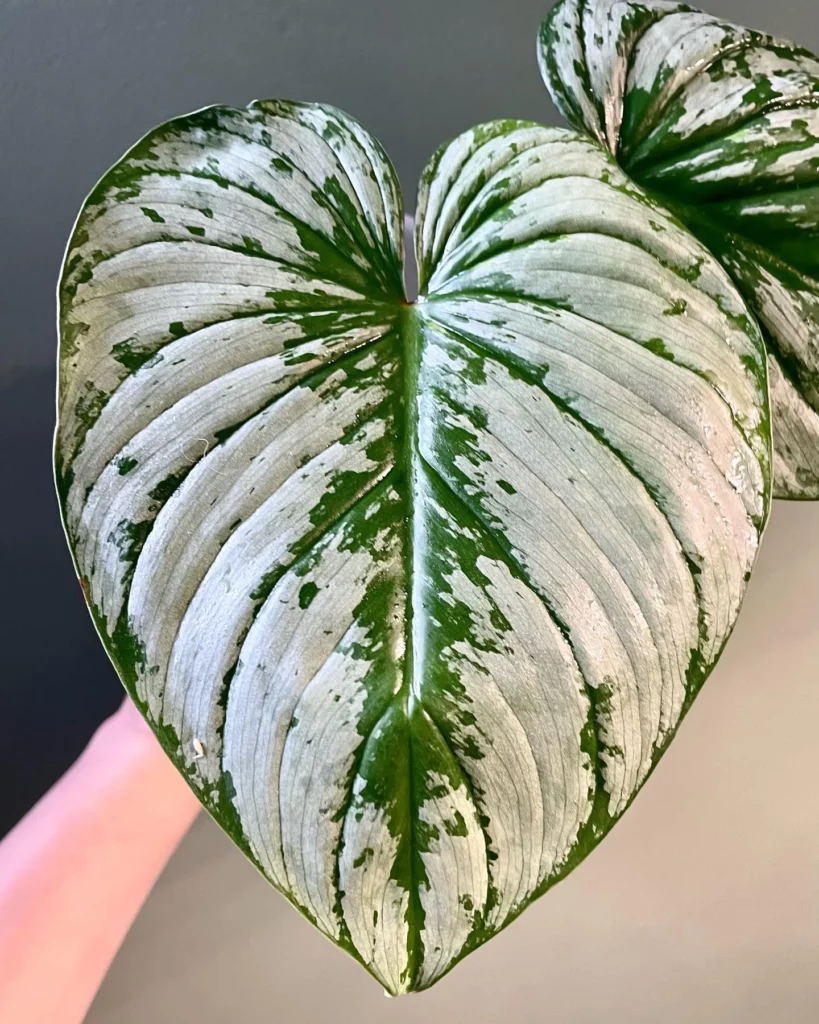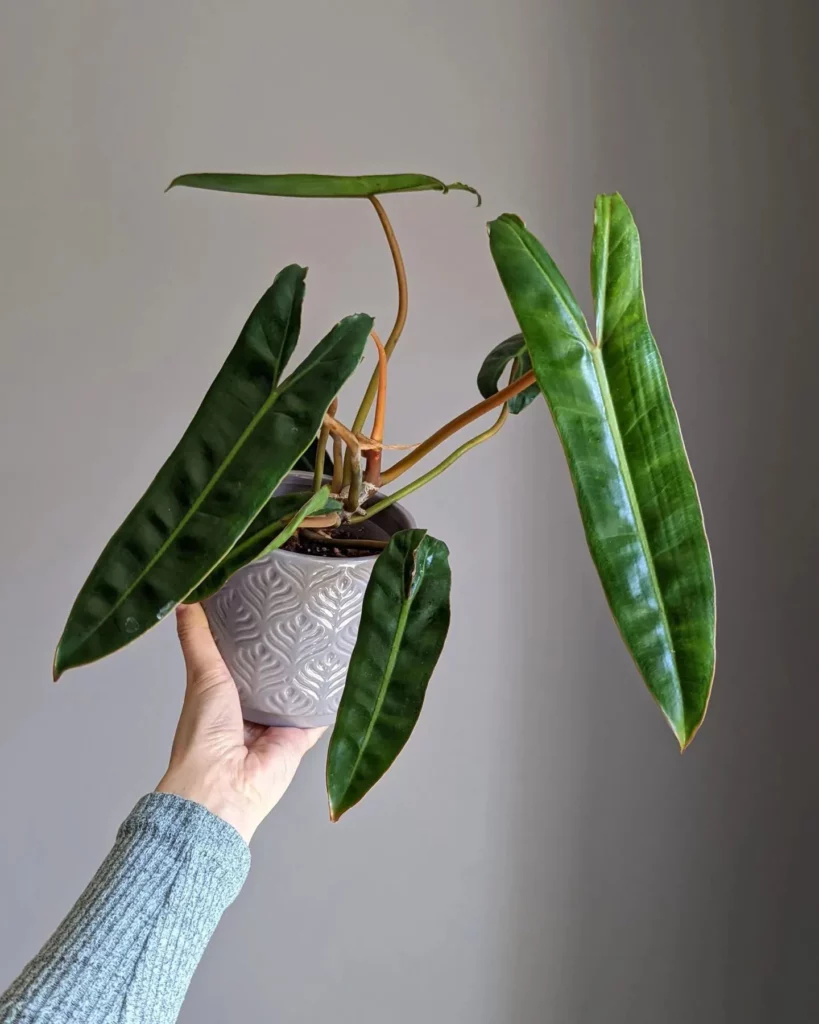The Philodendron Gloriosum is a stunning tropical plant known for its lush, velvety foliage. Unlike other Philodendron varieties, the Gloriosum creeps along the ground instead of climbing or trailing. It features large heart-shaped leaves with bright white veins, giving it a unique and captivating appearance.
Key Takeaways:
- Philodendron Gloriosum is a tropical plant with lush, velvety foliage.
- It creeps along the ground and has large heart-shaped leaves with bright white veins.
- Plant it in well-draining soil, provide bright indirect light, and maintain the right temperature and humidity levels.
- Water the plant when the top inch of soil feels dry and fertilize it during the growing season.
How to Grow and Care for Philodendron Gloriosum



Philodendron Gloriosum is a stunning tropical plant that requires special care to thrive. To ensure its healthy growth, follow these essential tips:
1. Light Requirements:
Philodendron Gloriosum prefers bright, indirect light. Place it near a window with filtered sunlight or provide artificial grow lights if necessary. Avoid exposing the plant to direct sunlight for extended periods, as it can scorch the leaves.
2. Soil Requirements:
Use a well-draining soil mix for planting or repotting Philodendron Gloriosum. A mixture of peat moss, perlite, and vermiculite works well to provide adequate drainage while retaining moisture. This plant appreciates slightly acidic soil with a pH between 5.5 and 6.5.
3. Watering:
Water the plant when the top inch of soil feels dry to the touch. Philodendron Gloriosum prefers moist soil but is susceptible to root rot if overwatered. Ensure proper drainage by using a pot with drainage holes and emptying any excess water from the saucer.
4. Propagation Tips:
Propagation of Philodendron Gloriosum can be done through stem cuttings. Take a cutting with at least two nodes and place it in water or a well-draining potting mix. Keep the cutting in a warm and humid environment until roots develop, then transfer it to a permanent pot.
No products found.
Potting and Repotting Philodendron Gloriosum



Proper potting and repotting are essential for the healthy growth of your Philodendron Gloriosum. Here are some steps to follow:
Choosing the Right Pot and Soil Mix
When potting or repotting your Philodendron Gloriosum, select a pot that is slightly larger than the current one. It’s important to choose a pot with drainage holes to ensure excess water can escape. For the soil mix, use a well-draining blend that consists of peat moss, perlite, and vermiculite. This combination promotes good drainage and helps prevent root rot.
Repotting Guidelines
Repotting should be done when your plant outgrows its current pot or when it needs fresh soil. Gently remove the plant from its current pot and loosen the root ball to encourage new root growth. Place the Philodendron Gloriosum in the new pot, ensuring it is centered and at the desired height. Fill the pot with the soil mix, firming it gently around the roots. Be careful not to compact the soil too tightly, as this can hinder proper drainage.
Caring for Your Newly Potted Plant
After potting or repotting, give your Philodendron Gloriosum a thorough watering to settle the soil around the roots. Keep the plant in a location with bright, indirect light and maintain a temperature range of 60°F to 80°F (15°C to 27°C). It’s essential to monitor the soil moisture and water the plant when the top inch feels dry. Remember to avoid overwatering, as this can lead to root rot. With proper potting and repotting, your Philodendron Gloriosum will continue to thrive and bring beauty to your space.
Pruning and Shaping Philodendron Gloriosum



Pruning and shaping your Philodendron Gloriosum is an important aspect of maintaining its appearance and promoting healthy growth. While this plant generally requires minimal pruning, over time, you may notice leggy or unruly growth that needs attention. To keep your Philodendron Gloriosum looking neat and compact, follow these pruning and shaping tips:
1. Use clean cuts:
When pruning your Philodendron Gloriosum, it’s crucial to use clean, sharp scissors or pruning shears. Clean cuts minimize the risk of damage and infection. Make sure to sterilize your tools before pruning to prevent the spread of diseases.
2. Remove leggy growth:
If you notice long, spindly stems or excessive vine-like growth, it’s best to remove these sections. This will help maintain a more compact and bushy appearance for your Philodendron Gloriosum.
3. Shape the plant:
As your Philodendron Gloriosum grows, you can shape it to your liking. Trim back any branches or leaves that extend too far or disrupt the overall form of the plant. Regular shaping will help keep your Philodendron Gloriosum looking balanced and well-proportioned.
Temperature, Humidity, Watering, and Fertilizing for Philodendron Gloriosum
Creating the ideal environment for your Philodendron Gloriosum is crucial for its growth and wellbeing. This tropical beauty thrives in warm temperatures ranging from 60°F to 80°F (15°C to 27°C). It’s important to avoid exposing the plant to temperatures below 50°F (10°C), as it can harm the leaves and hinder its growth.
Humidity is another key factor for the Philodendron Gloriosum’s success. Mimicking its native tropical forests, this plant prefers humidity levels between 50% to 80%. To maintain the right humidity, you can use a humidifier, place a tray of water near the plant, or group it with other houseplants to create a microclimate.
When it comes to watering your Philodendron Gloriosum, it’s important to strike a balance. Water the plant when the top inch of soil feels dry, ensuring that the water reaches the roots and drains out through the pot’s drainage holes. This plant prefers slightly moist soil, but overwatering can lead to root rot and other issues.
To promote healthy foliage growth, fertilize your Philodendron Gloriosum regularly during the growing season. Use a balanced liquid fertilizer that is high in nitrogen, following the instructions on the package. Avoid over-fertilizing, as it can harm the plant’s roots. A well-nourished plant will reward you with vibrant and lush leaves.





